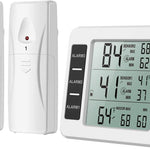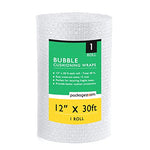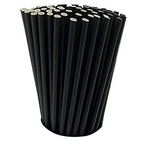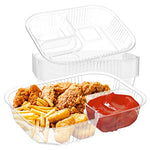You have no items in your shopping cart.

Photo Credit: BonNontawat/canva
In today's world, hygiene and safety have taken center stage. Whether you're a healthcare professional, a food handler, or simply someone conscious of cleanliness, disposable gloves have become an indispensable part of daily life. In this article, we'll delve deep into the world of disposable gloves, exploring their diverse applications, benefits, and the correct way to use and dispose of them.
Gloves Disposable: A Brief Overview
Disposable gloves, as the name suggests, are single-use gloves made from various materials like latex, nitrile, or vinyl. They are designed to provide a barrier between your skin and potentially harmful substances. These gloves come in various sizes and types, making them suitable for a wide range of applications.
The Versatility of Gloves Disposable
Disposable gloves find applications in numerous fields:
Healthcare
Disposable gloves are a cornerstone of healthcare settings. Doctors, nurses, and healthcare workers rely on them to maintain a sterile environment during medical procedures and examinations.
Food Industry
In the food industry, safety and hygiene are paramount. Food handlers use disposable gloves to prevent contamination and ensure the safety of the products they prepare.
Automotive Sector
Mechanics and automotive workers use disposable gloves to protect their hands from oil, grease, and chemicals while working on vehicles.
Cleaning and Janitorial Services
Cleaning professionals trust disposable gloves to shield their hands from harsh cleaning chemicals and potential biohazards.
Advantages of Disposable Gloves
Disposable gloves offer several advantages:
- Hygiene: They help maintain a sterile environment in healthcare and food service industries.
- Protection: Protect hands from chemicals, pathogens, and contaminants.
- Convenience: Easy to put on and remove, making them ideal for quick tasks.
- Variety: Available in different materials and sizes to suit various needs.
Proper Usage of Disposable Gloves
To maximize the benefits of disposable gloves, follow these guidelines:
- Choose the Right Type: Select gloves that are appropriate for the task at hand.
- Inspect for Damage: Examine gloves for tears or defects before using them.
- Proper Fit: Ensure gloves fit snugly without being too tight.
- Donning and Doffing: Learn the correct way to put on and remove gloves to prevent contamination.
- Dispose of Properly: After use, dispose of gloves in designated bins or containers.
FAQs About Disposable Gloves
Q: Can I reuse disposable gloves? A: No, disposable gloves are designed for single use only. Reusing them can compromise hygiene and safety.
Q: What's the difference between latex and nitrile gloves? A: Latex gloves are made from natural rubber and are suitable for most tasks. Nitrile gloves are synthetic and offer better chemical resistance.
Q: Are disposable gloves recyclable? A: No, disposable gloves are not recyclable due to contamination concerns.
Q: How do I choose the right size of disposable gloves? A: Measure your hand's width and length to find the appropriate glove size according to the manufacturer's guidelines.
Q: Are there eco-friendly disposable glove options? A: Yes, some brands offer biodegradable and eco-friendly disposable gloves made from sustainable materials.
Q: Can disposable gloves cause allergies? A: Latex gloves can trigger allergies in some individuals. Nitrile or vinyl gloves are hypoallergenic alternatives.
Disposable gloves play a crucial role in maintaining hygiene, safety, and cleanliness in various industries. Understanding their proper use and disposal is essential for ensuring the health and well-being of both professionals and consumers. By following the guidelines outlined in this article, you can make informed choices about using gloves disposable in your daily life.
Top Picks For Trash Bag
Introducing our 15 Gallon Tall Kitchen Bags! These bags are perfect for everyday kitchen waste and feature a strong and reliable design.
"These bags have made my kitchen cleanup a breeze. Highly recommend them!"
- Emily Jarred
"I've been using these bags for months now, and they never disappoint. Great quality!"
- Michael Anderson
Introducing our 39 Gallon Heavy-Duty Trash Bags! These bags are perfect for handling larger loads of trash and are built to resist tears and leaks.
"These bags are the best I've ever used. They can handle even the toughest trash."
- Lewis Martinez
"I'm impressed by the durability of these bags. They never fail to hold up, even when filled to the brim!"
- Jessica Roberts
Introducing our 33 Gallon Heavy-Duty Trash Bags! These bags are designed to handle heavy loads of trash, making them ideal for residential and commercial use.
"I've never had a bag that could handle so much trash. These bags are a game-changer!"
- Samantha Turner
"I run a small restaurant, and these bags are perfect for our needs. They're strong, reliable, and affordable!"
- David Patterson
Introducing our 55 Gallon Contractor Trash Bags! These bags are designed to handle heavy, bulky trash and are commonly used in construction and renovation projects.
"These bags are an absolute lifesaver on our construction sites. They can handle anything we throw at them!"
- Mark Thompson
"I've used many different contractor bags, and these are by far the best. They never let me down!"
- Rachel Collins
















